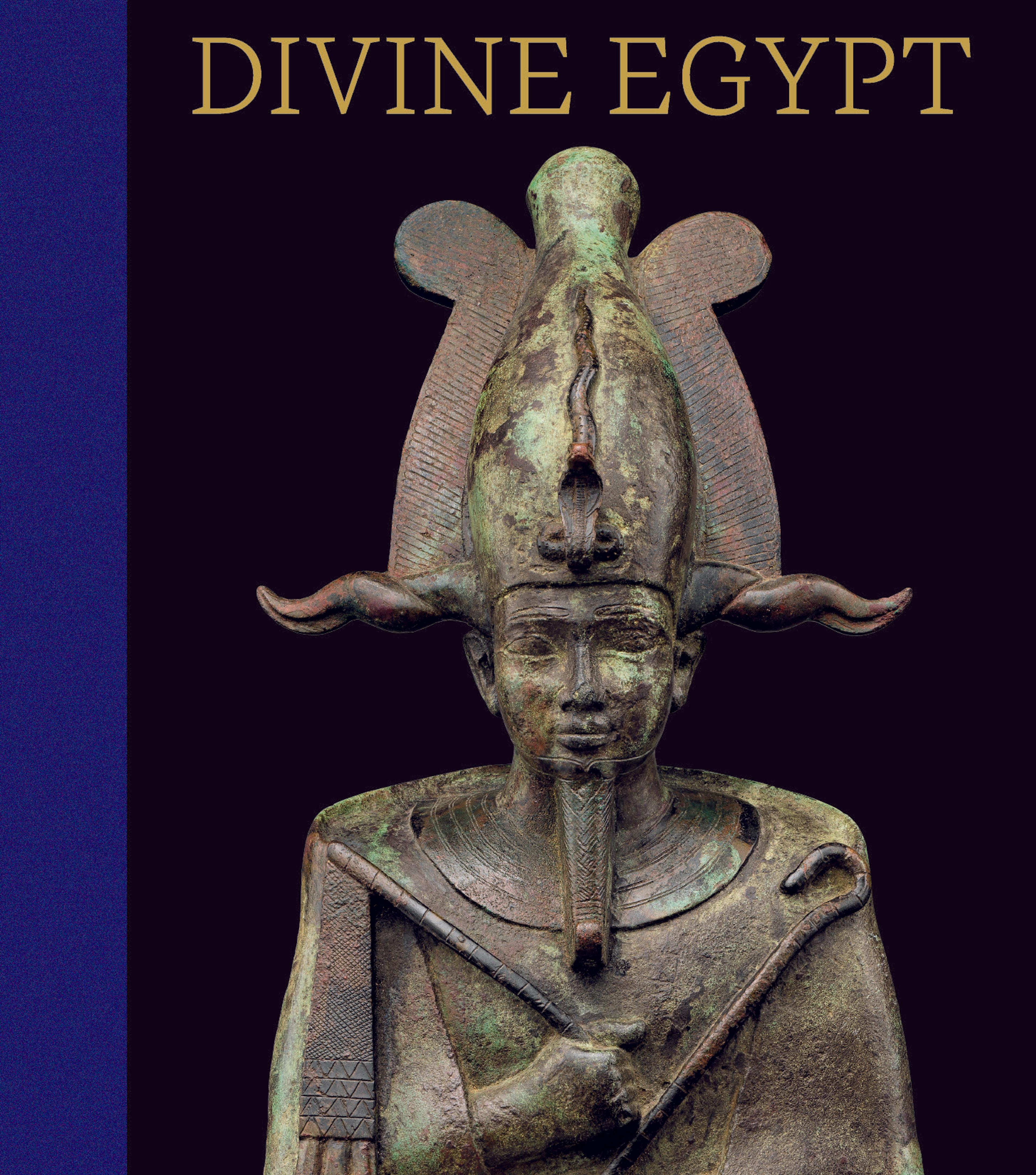Stela of Tjanetdinetiset and Djedbastet
This is one of four stelae found near the doorway of the brick chapel of the family of Saiah, a wab, or purification priest of Amun who lived during the latter half of the 22nd Dynasty. The original tomb in whose courtyard this chapel was built dates to the 11th Dynasty, over a century earlier. All of the stelae are made of wood, painted in green, red, yellow and black on a white gesso ground.
The Mistress of the House, Chantress of Amun, Tatiaset, was a daughter of Siah. She was married to a Scribe of the House of the Divine votaress of Amun, Djedbastet, son of Merenkhonsu. One side of her stela shows the deceased being led by Anubis toward the seated statue of Ra-Harakhty. The other has the deceased on the left, facing the right. She and her husband, each seated on a chair, receive water from Nut in the tree. The goddess, as was common in this period, is shown in a frontal view.
The Mistress of the House, Chantress of Amun, Tatiaset, was a daughter of Siah. She was married to a Scribe of the House of the Divine votaress of Amun, Djedbastet, son of Merenkhonsu. One side of her stela shows the deceased being led by Anubis toward the seated statue of Ra-Harakhty. The other has the deceased on the left, facing the right. She and her husband, each seated on a chair, receive water from Nut in the tree. The goddess, as was common in this period, is shown in a frontal view.
Artwork Details
- Title: Stela of Tjanetdinetiset and Djedbastet
- Period: Third Intermediate Period
- Dynasty: Dynasty 22
- Date: ca. 825–712 BCE
- Geography: From Egypt, Upper Egypt, Thebes, Deir el-Bahri, west of Priests' Cemetery, Tomb MMA 801, MMA excavations, 1921–22
- Medium: Wood, paste, paint
- Dimensions: H. 23.7 × W. 21 × D. 2 cm (9 5/16 × 8 1/4 × 13/16 in.)
- Credit Line: Rogers Fund and Edward S. Harkness Gift, 1922
- Object Number: 22.3.33
- Curatorial Department: Egyptian Art
More Artwork
Research Resources
The Met provides unparalleled resources for research and welcomes an international community of students and scholars. The Met's Open Access API is where creators and researchers can connect to the The Met collection. Open Access data and public domain images are available for unrestricted commercial and noncommercial use without permission or fee.
To request images under copyright and other restrictions, please use this Image Request form.
Feedback
We continue to research and examine historical and cultural context for objects in The Met collection. If you have comments or questions about this object record, please contact us using the form below. The Museum looks forward to receiving your comments.
